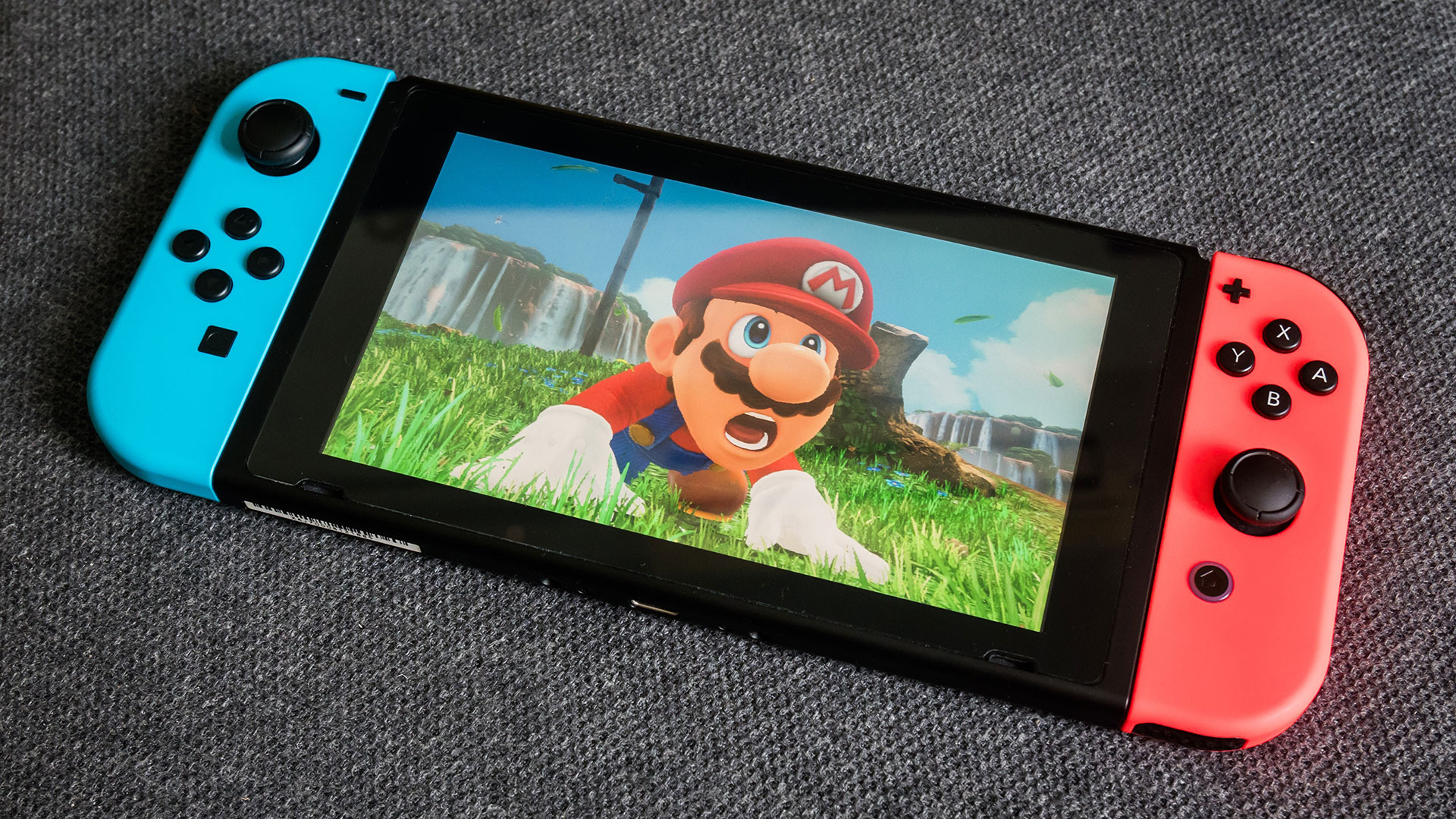
Many would agree that the Nintendo Switch, which launched in 2017, is overdue for a hardware upgrade. It has been long rumored that the Nintendo Switch 2 could potentially tap into Nvidia’s Ampere architecture to offer gamers a new handheld gaming experience. A new GitHub update (via Kepler_L2) lends some credence to the early rumors.
The original Nintendo Switch debuted with Nvidia’s Tegra X1 (Erista) SoC. The T214 processor features four Cortex-A57 and four Cortex-A53 cores. It’s the same chip that powers Nvidia’s 2017 Shield. However, the variant inside the Nintendo Switch only utilizes the Cortex-A57 cores, which is probably why Nintendo advertised the chip as a “customized Tegra processor.” It’s a bit of a waste since the four Cortex-A53 cores are left unexploited — for lighter workloads, those could have offered extended battery life.
It didn’t take long for Nintendo to revamp the Switch’s internals, incorporating a revised version of the Tegra X1. The Nintendo Switch 1.1 and subsequent models utilized the new Tegra X1+ (Mariko) chip. The T210 offer the same specifications as the T214 but had the advantage of a newer manufacturing process. While the T214 was produced on TSMC’s 20nm node, the T210 tap into the Taiwanese foundry’s 16nm FinFET process node. The performance difference between the Tegra X1 and Tegra X1+ was negligible but the latter was more power efficient. According to Nintendo, the Switch 1.1’s battery life spans between four and a half hours to nine hours, a significant bump over the original’s two and a half hours to six and a half hours.
The current rumor around hardware circles is that the Nintendo Switch 2 could employ a customized version of Nvidia’s Jetson Orin. The GitHub page points to the T234 and T239. As reputable hardware leaker kopite7kimi pointed out, Nintendo will likely utilize the T239, a custom-made version of the vanilla T234.
| Header Cell – Column 0 | Nintendo Switch 2* | Nintendo Switch (1.1, Lite, OLED) | Nintendo Switch |
|---|---|---|---|
| SoC | Orin | Tegra X1+ (Mariko) | Tegra X1 (Isolate) |
| Process Technology | Samsung 8nm | TSMC 16nm | TSMC 20nm |
| CPU | T239 | T210 | T214 |
| CPU Cores | 12 x Cortex-A78AE | 4 x Cortex-A57, 4 x Cortex-A53 | 4 x Cortex-A57, 4 x Cortex-A53 |
| Memory | LPDDR5 | 4GB LPDDR4-1600 | 4GB LPDDR4-1600 |
| GPU | GA10B (Ampere) | GM20B (Maxwell) | GM20B (Maxwell) |
| CUDA Colors | 2,048 | 256 | 256 |
| Docked / Undocked Clock (MHz) | ? | 384 / 768 | 384 / 768 |
*Specifications are unconfirmed.
Orin obviously has a lot to offer over the Tegra X1+. For starters, Orin is based on the Ampere architecture (2020) whereas the Tegra X1+ dates from the Maxwell (2014) days. We’re looking at a difference of three generations of GPU performance. Orin features the GA10B silicon, produced on Samsung’s 8nm process node, the same process used to fabricate the GeForce RTX 30-series graphics cards.
The T234 features 12 Cortex-A78AE cores and LPDDR5 support, complementing the GA10B GPU. The GA10B (Ampere) silicon houses 2,048 CUDA cores, eight times as many as GM20B (Maxwell). Those are just the official specifications for the T234, though. It’s unknown how Nvidia will tailor the T239 toward Nintendo’s needs. If we’re being realistic, it’s unlikely that the T239 will use the full GA10B die. The GA10B has a maximum TDP of 60W. In comparison, GM20B is a 15W chip but has an average power draw below 10W. If Nintendo wants to retain the same power characteristics, the T239 would need to be in the same ballpark as the Jetson Orin Nano, which features a cut-down GA10B chip with 512 CUDA cores and a 10W TDP.
The Nintendo Switch 2 doesn’t necessarily have to be a powerhouse. The device will likely take advantage of Nvidia’s DLSS (Deep Learning Super Sampling) upscaling technology to improve frame rates while reducing power requirements. Ray tracing support is reportedly on the table too, but though the experience might be lacking since ray tracing is pretty taxing on the GPU.
There have been rumors that a handful of developers got the chance to see the Nintendo Switch 2 in action behind closed doors at Gamescom 2023. The handheld gaming device reportedly ran The Legend of Zelda: Breath of the Wild at 60 FPS with a resolution of 4K. The demo allegedly benefitted from DLSS 3.5, minus frame generation. Loading times improved substantially, according to the YouTuber. The Nintendo Switch 2 also demonstrated its prowess in The Matrix Awakensan Unreal Engine 5 tech demo, according to other claims.







